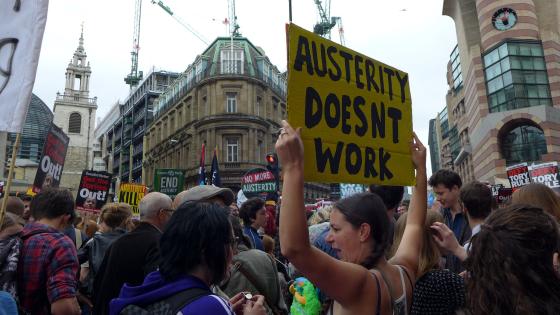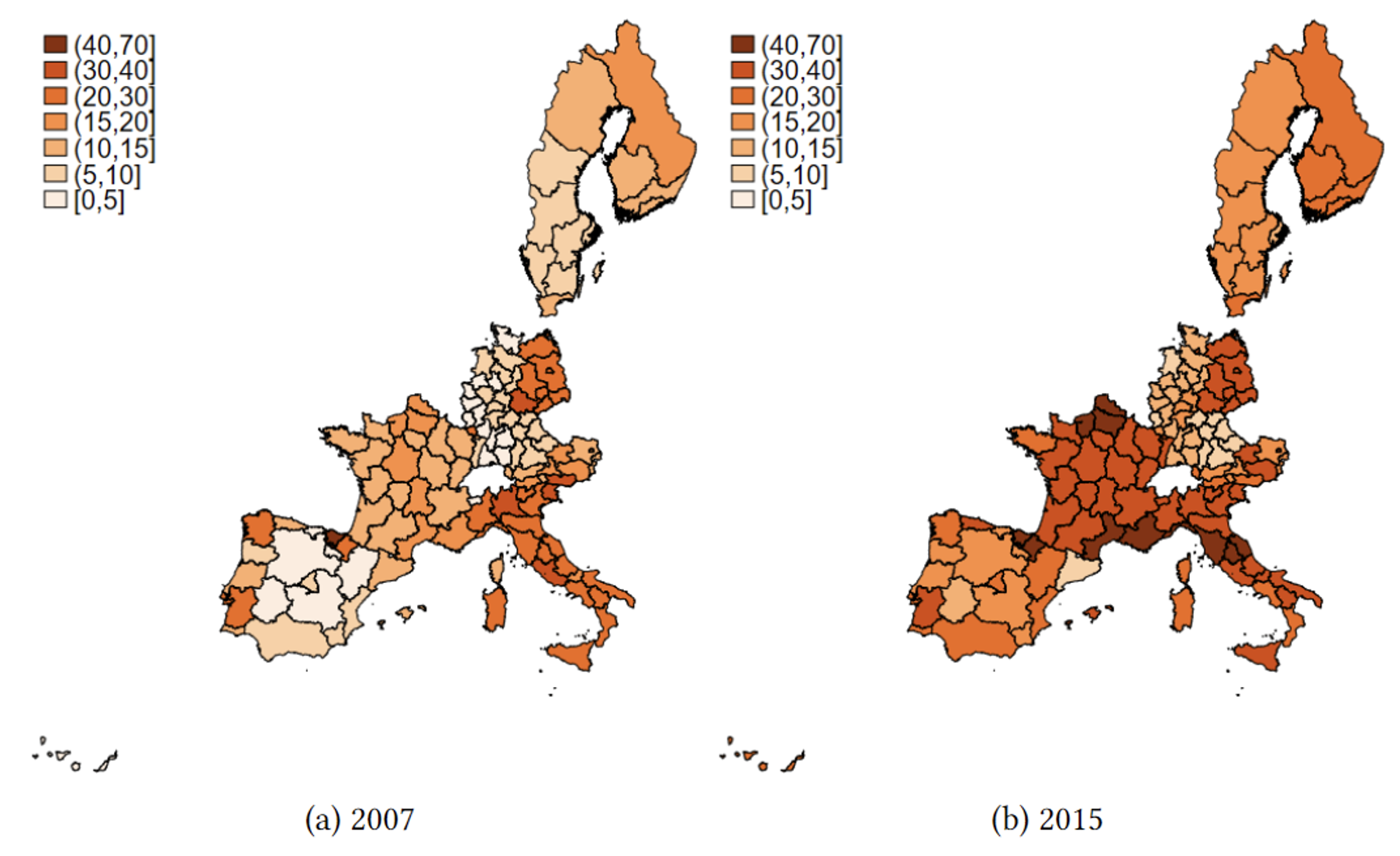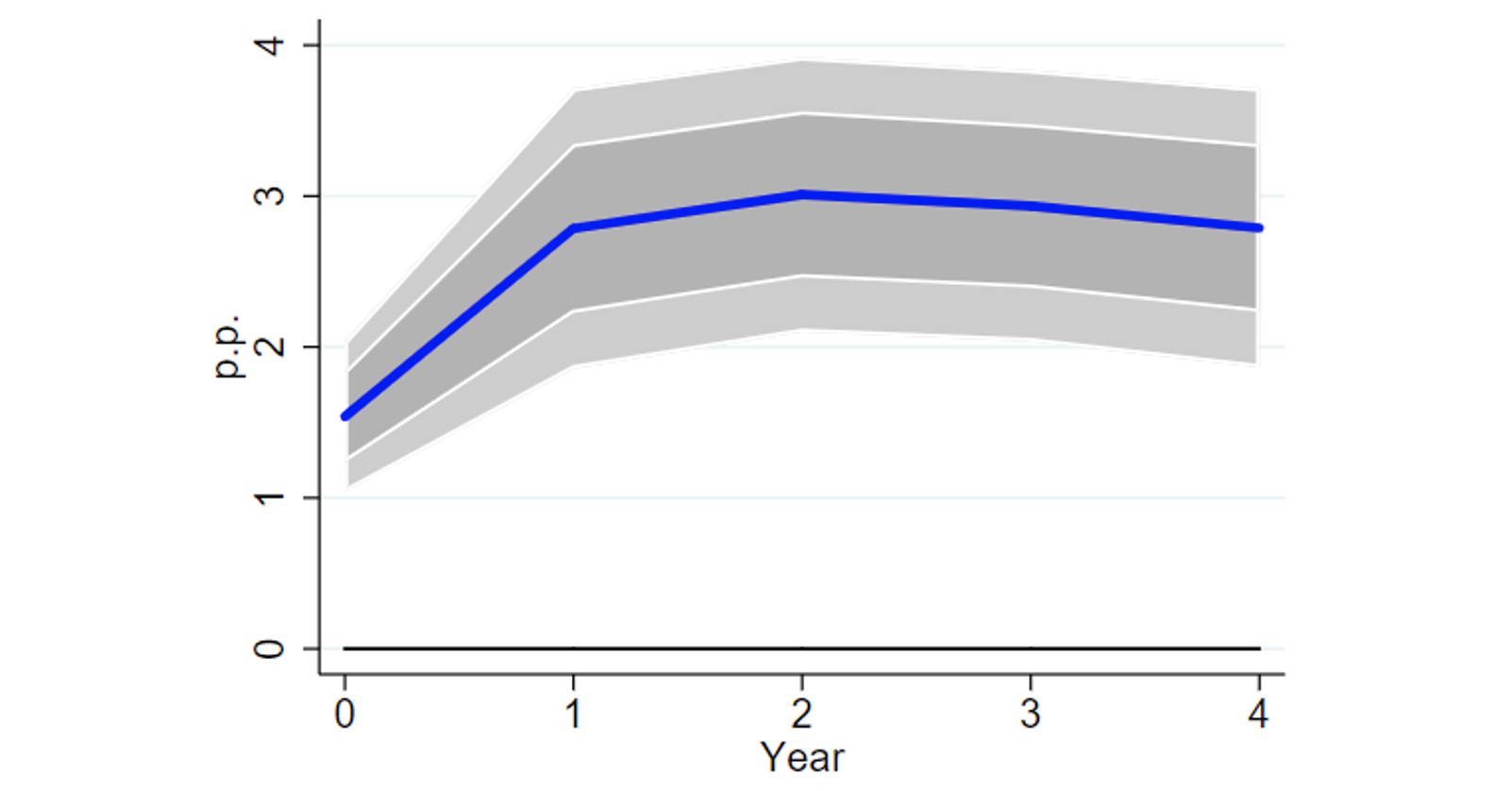Anti-establishment and populist parties have gained significant support since the Great Recession in many advanced economies around the world (Guiso et al. 2017, Rodrik 2017). Higher vote shares for these parties have increased partisan conflict and led to more fragmented parliaments. The resultant polarised political environment is generally associated with higher policy uncertainty and lower economic growth (Schiantarelli et al. 2020, Schularick et al. 2021).
The rise in support for extreme parties occurred in a period of significant fiscal policy interventions. Several European countries have implemented large-scale fiscal consolidation measures to reduce high levels of public debt. The massive reductions in public spending faced significant opposition and resulted in anti-austerity movements. In a recent paper, we investigate the link between fiscal consolidations and rising polarisation and provide new evidence on the political costs of fiscal austerity (Gabriel et al. 2022).
To this end, we assemble a novel regional dataset on election outcomes that provides detailed voting results on regional, national, and European elections. Our final dataset covers 124 European regions from eight countries and spans from 1980 to 2015. We collect data on more than 200 elections, with roughly 20 elections per region and, on average, one election every two years.
Austerity increases political polarisation
Figure 1 gives a first impression of the regional election data. It shows the regional vote shares for extreme parties for the regions in the sample for the years 2007 and 2015, just before the start of the Great Recession and after the height of the Sovereign Debt Crisis. The figure shows that more extreme voting in the recent past is a shared phenomenon across countries and regions. Particularly strong increases in the vote shares of extreme parties can be observed for regions in France, Spain, and Italy. However, there are also significant differences across regions within the same country. For example, while regions in the western and southern parts of Germany show lower vote shares for extreme parties, voters in the eastern part favour extreme parties more strongly.
Figure 1 Regional vote shares on extreme parties in 2007 and 2015
Notes: Figures 1a and 1b depict, in per cent, the sum of the far-left and far-right vote shares for European regions at the NUTS 2 level in 2007 and 2015, respectively. If elections do not take place in these specific years, the map shows the outcome from the previous ballot.
To test the causal relationship between fiscal austerity and voting outcomes, we identify exogenous changes in national government expenditures motivated by a desire to reduce budget deficits in response to past decisions. We then combine them with regional sensitivities to fiscal spending to account for the fact that regions that rely heavily on public spending are likely to be more affected by national government austerity measures.
Figure 2 presents the response of extreme parties’ vote share to fiscal consolidation. A 1% reduction in regional public spending leads to an increase in extreme parties’ vote share of around three percentage points. Our results suggest that around 10% of the variation in extreme parties’ vote share is indeed due to fiscal consolidations, which further highlights the importance of austerity in understanding shifts in voters’ preferences toward the more extreme ends of the political spectrum.
Figure 2 Response of extreme parties’ vote share to austerity
Notes: The figure plots the impulse response in percentage points of the vote share for the extreme parties to an austerity-induced change in government spending by 1%. Bands are 68% (dark) and 90% (light) confidence intervals.
We also show that the higher vote share captured by extreme parties can be explained by a fall in voter turnout together with an increase in the total votes for these parties. Thus, fewer people vote in response to fiscal consolidations and those who do exhibit a higher tendency to vote for extreme parties. In addition, austerity increases fragmentation, which suggests that austerity affects economic outcomes through a more polarised political environment.
Austerity is economically costly and increases distrust in the government
To rationalise our main findings on the political consequences of austerity, we also estimate the economic effects of fiscal consolidations at the regional level. Austerity leads to a significant fall in regional output, employment, investment, durable consumption, and wages. Furthermore, the reduction in public spending lowers the labour income share, thereby inducing income redistribution away from working households. These findings highlight the close relationship between detrimental economic developments and voters’ support for extreme parties following fiscal consolidations.
Ultimately, we examine whether austerity-driven recessions yield different political outcomes than general economic downturns. We differentiate between recessions that coincide with fiscal consolidations (‘austerity recessions’) and those not related to austerity (‘non-austerity recessions’) and estimate the response of extreme parties’ vote share in both episodes of economic slack. Our estimates imply that austerity recessions lead to a significantly larger increase in the vote share for extreme parties than other recessions.
We relate this result to a potential trust channel of fiscal consolidations by showing that people’s trust in the government deteriorates much more during austerity recessions compared to non-austerity recessions. This might point toward a ‘doom loop’ between distrust in the political system and more extreme voting following fiscal consolidations. In sum, austerity-driven recessions are special in the sense that they considerably amplify the political costs of economic downturns by creating more distrust in the political environment.
References
Algan, Y, S Guriev, E Papaioannou and E Passari (2017), “The european trust crisis and the rise of populism”, Brookings Papers on Economic Activity 2017(2): 309–400.
Funke, M, M Schularick and C Trebesch (2016), “Going to extremes: Politics after financial crises, 1870–2014”, European Economic Review 88: 227–260.
Gabriel, R D, M Klein and A S Pessoa (2022), “The Political Costs of Austerity”, Sveriges Riksbank Working Paper No. 418.
Guiso, L, H Herrera, M Morelli and T Sonno (2017), “The spread of populism in Western countries”, VoxEU.org, 14 Oct.
Rodrick, D (2017), “Economics of the populist backlash”, VoxEU.org, 3 July.
Schularick, M, C Trebesch and M Funke (2021), “The cost of populism: Evidence from history”, VoxEU.org, 16 February.
Schiantarelli E, M Brancati, M Briant and P Balduzzi (2020), “Populism, political risk and the economy: What we can learn from the Italian experience”, VoxEU.org, 20 February.








